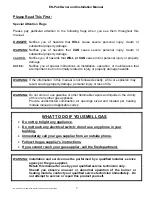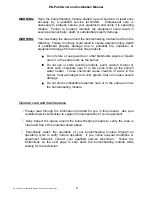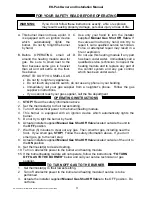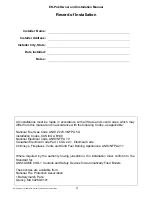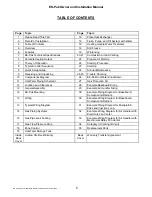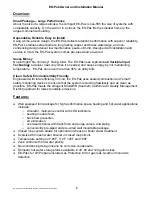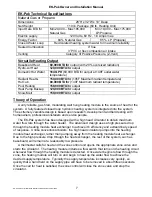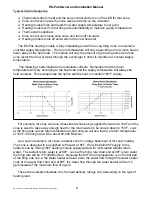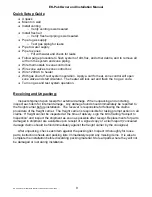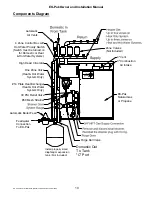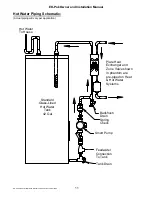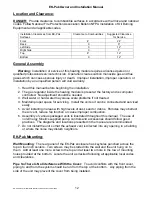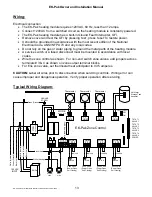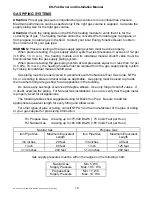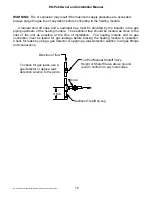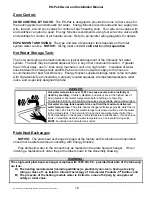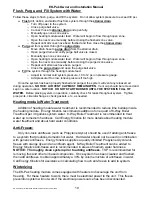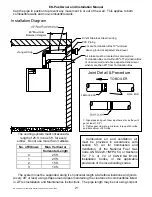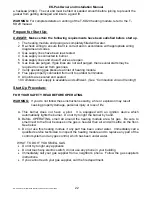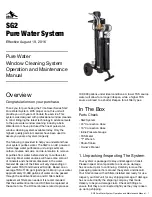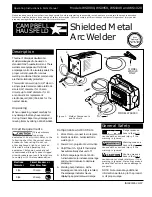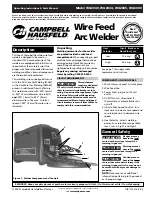
EK-Pak Owner and Installation Manual
EK-Pak Owner & Installation Manual First Edition December 2002
7
EK-Pak Technical Specifications
Natural Gas or Propane
Dimensions
28”H x 32”W x 10” Deep
Net Weight
110 lb. Package (60 lb. Heating Unit)
Input Rate BTU/hr
Min 20,000 – Max 185,000
Natural Gas
Min 19,000 – Max 175,000
LP/Propane
Electric supply
120 Volts, 60 Hz, 1.8 Amps max.
Energy Factor
84% Natural Gas
85% LP (Propane)
Closed Water Loop
Recirculated heating system water for maximum reliability
Sealed Combustion
4” flue
3” PVC or flex combustion air intake
Venting
Category III Positive Pressure, (Z-Vent)
Versatile Heating Output
Baseboard Heat
60,000 BTU/hr
output (with 20% oversized radiation)
Hydro-Air Heat
120,000 BTU/hr
output
Domestic Hot Water
164 GPH
(80,000 BTU/hr output at 140F outlet water
temperature)
Radiant Heat &
Hot Tub
150,000 BTU/hr
(105F Maximum radiant temperature)
80,000 BTU/hr
(140F Maximum radiant temperature)
Pool Heating
150,000 BTU/hr
output
Heat Pump Backup
120,000 BTU/hr
output
Snow-Melt
150,000 BTU/hr
output
Theory of Operation
A very reliable, gas fired, modulating wall hung heating module is the source of heat for the
system. A fully featured closed loop hydronic heating system is integrated into the system.
The extremely versatile design is based upon research, development and field testing with
homeowners, professional installers and service people.
The EK-Pak system has been designed with a high head circulator to obtain maximum
water flow rate through the water heater. The advanced design uses a high pressure drop
through the heating module heat exchanger to achieve it’s efficiency and extraordinary speed
of response. Unlike conventional boilers, the high head circulator pumps into the heating
module heat exchanger, rather than pumping away from the heating module heat exchanger.
Due to the high pressure drop through the heat exchanger, the rest of the system, such as
baseboard, will remain at a reasonably low pressure.
A thermostat calls for heat and the zone control unit opens the appropriate zone valve and
starts the circulator. The heating module includes a flow switch that turns on the heating circuit
whenever flow through the heating module is detected. Once water begins to flow through the
zone, the heating module will turn on and begin to heat up the water flow to achieve the
desired supply temperature. Typically the supply temperature increases very quickly, so
quickly that a hand held on the supply pipe will have to be removed in about fifteen seconds.
Once the call for heat is satisfied, the zone control will close the zone valve and stop the
circulator.


